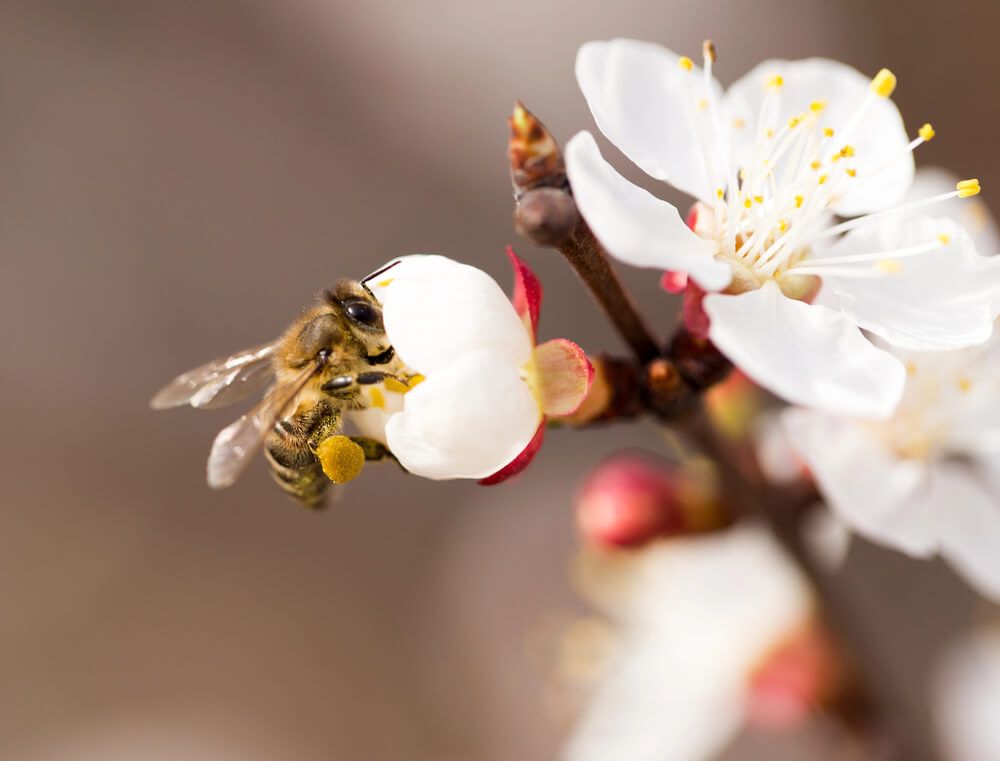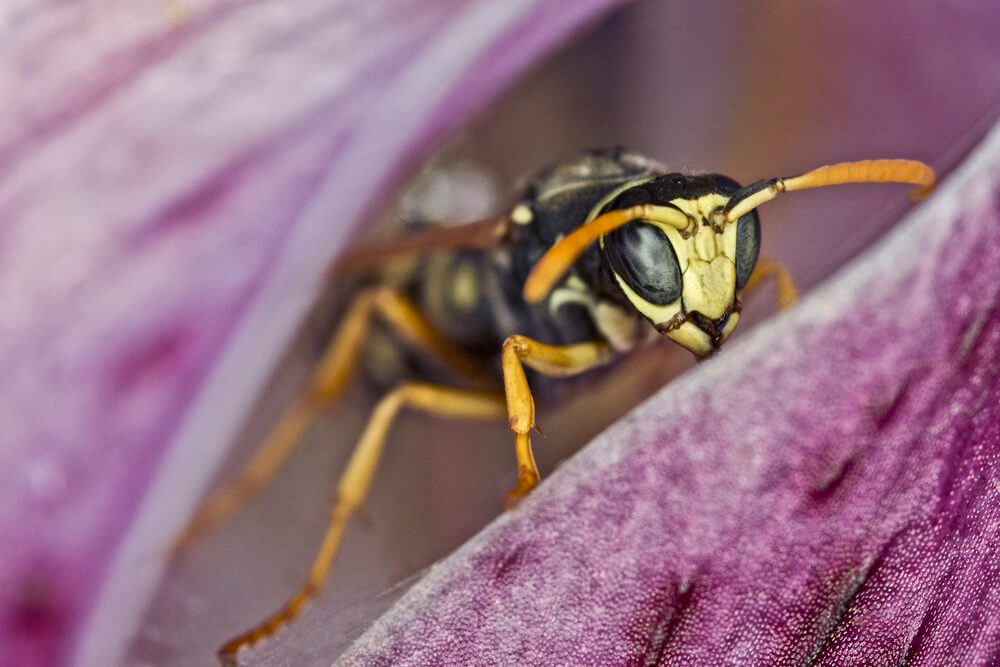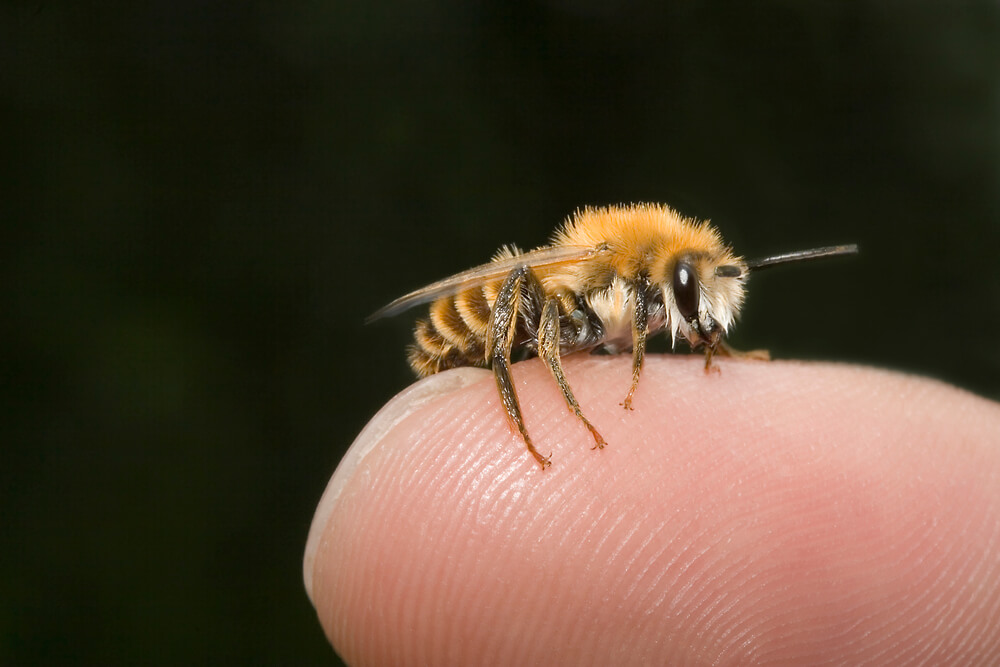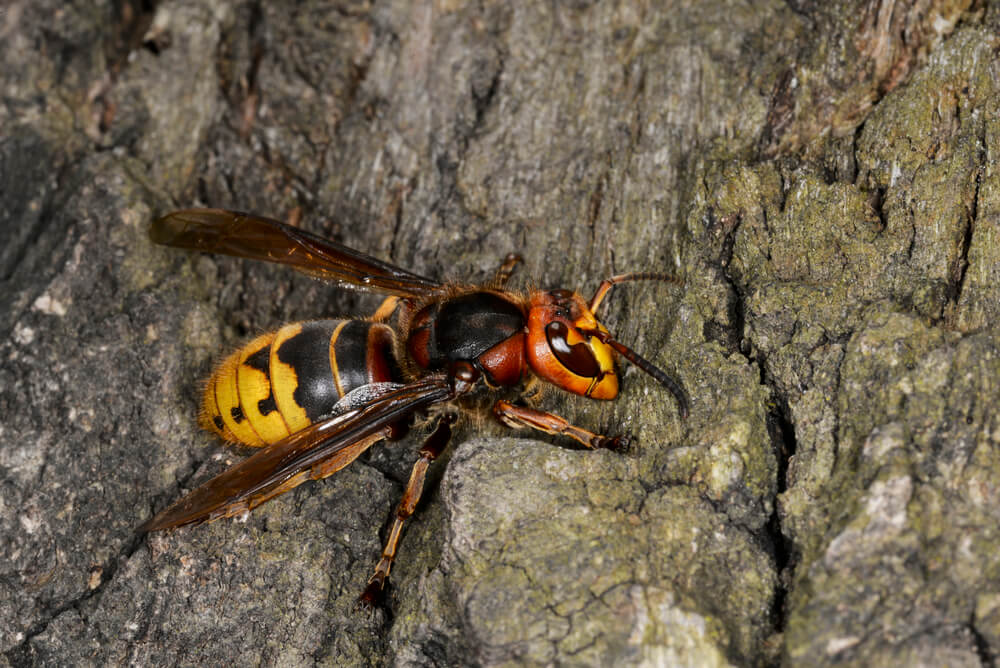To put it simply, the best trees for bees are ones that are native to your area.
Native plants are the species that grow naturally in a location. You can use the Native Plants Finder tool to find the best bee trees for your particular location.
Why is this important?
Because bees and other pollinators rely on native plants for survival. For example, in my area, leafcutter bees need native trees like Eastern redbuds (Cercis canadensis) to build their nests.
Sure, Japanese cherry blossom trees are gorgeous. But my local leafcutter bees won’t touch those with a ten-foot pole because they aren’t native to my area.
You see, native insects have evolved to have a special relationship with native plants. It’s the intricate balance of nature. Just like monarch butterflies need certain species of milkweed to lay eggs on, bees need certain species of plants to survive.
The good news?
Native plants and trees are often less maintenance than non-natives.
This is exactly why I got into gardening with native plants. I don’t have to fuss with many soil amendments or fertilizers. Most of my natives survive the heat and droughts just fine, so it’s cut down on my water bill aswell.
Plus, having happy bees, birds, and pollinators makes me feel like I’m making a real difference on my little piece of the earth.
It may not matter to most. But it certainly matters to my local pollinators.
So, in summary, use the Native Plant Finder to find trees native to your area. These will be the best trees for bees. Additionally, native trees will also help your local birds, butterflies, ladybugs, moths, and other pollinator populations.
If you want to learn more about why native gardening is so crucial, watch Doug Tallamy’s presentation.
With that in mind, I’ve included some bee tree suggestions below. Please only consider planting these trees if they’re native to your area.
1. American Crabapple Tree (Malus coronaria):

Crabapple trees are a great source of spring food for bees and add a splash of brightness to any landscape. Other animals also feed off the fruits that these trees produce. Pruning should be done in the winter or early spring before the buds develop.
Where to buy: Amazon
Growing Crabapple Trees
- Sun exposure: Full sun
- Blooms: Spring
- Flower color: White with a pink tinge
- Size: 25 feet tall, 35 feet wide
- Hardiness zones: 4-8 (USDA)
2. Black willow (Salix nigra):

When bees emerge from winter, willow trees are an early source of pollen and nectar in the spring. As such, beekeepers often plant these trees close to their honey bee hives.
Willow trees are well-suited to wet locations with full sun. They thrive in a wide range of conditions and can reach 30 to 50 feet in height.
Overall, willow trees are beautiful and easy to maintain. To make maintenance easier, prune young trees to keep lower limbs up. These trees form a round canopy that gives off a dramatic, elegant appearance.
Willow trees have long roots, so don’t plant near underground powerlines or sewers. Weeping willow trees thrive when planted near water, such as ponds or lakes.
Where to buy: Amazon
Growing Willow Trees
- Sun exposure: Full sun or light shade
- Blooms: Spring
- Flower color: Yellowish-green
- Size: 30 to 60 feet
- Hardiness zones: 4-9 (USDA)
3. Tulip Tree (Liriodendron tulipifera):

Tulip trees, also called tulip poplars, offer great nectar sources for bees and other pollinators.
They get their name from their large, showy flowers that resemble tulips. With the exception of the flower shape, these trees have no relation to tulips. They’re more closely related to magnolia trees.
Tulip trees reliably bloom in May and June. Their blooms can last for a month or longer, making them a valuable food source for bees.
Tulip trees are large trees that can reach 60 to 90 feet with a spread of 50 feet.
Like magnolia trees, the tulip tree is valued as a large shade tree with gorgeous flowers. It’s simple to grow but thrives in well-drained soil with a lot of rich organic matter.
It thrives in full sun and can tolerate a wide range of pH levels, although it prefers slightly acidic soil.
Where to buy: Amazon
Growing Tulip Trees
- Sun exposure: Full sun or light shade
- Blooms: Spring
- Flower color: Pale greenish-yellow
- Size: 60-90 feet
- Hardiness zones: 4-9 (USDA)
4. Sourwood Tree (Oxydendrum arboreum):

Bees absolutely love sourwood trees. They’re drawn to them as soon as they begin to flower.
The sourwood tree is the source of the popular sourwood honey. In fact, North Carolina has its own Sourwood Honey Festival every year.
Sourwood trees, also called sorrel trees, offer beautiful summer blooms with a faint fragrance. The foliage turns crimson in the fall, giving this tree visual interest throughout the various seasons.
Sourwood grows slowly and matures at a height of 25 to 30 feet with a spread of 12 to 20 feet. Due to their compact size, sourwood trees are perfect for small spaces.
Sourwood trees have a shallow root system, so they should be planted away from other plants so it doesn’t compete with them.
Where to buy: Amazon
Growing Sourwood Trees
- Sun exposure: Full sun or light shade
- Blooms: Spring, summer
- Flower color: White, fragrant
- Size: 20-30 feet
- Hardiness zones: 5-9 (USDA)
5. American Witchhazel (Hamamelis virginiana L.):

If you spot a witch hazel tree, you’ll notice it’s covered in happy bees.
But that’s not all.
Other pollinators like wasps, moths, and even beetles love the food source that witch hazels provide. Witch hazels are considered small trees (or large shrubs) with heights reaching 15 to 30 feet.
They produce yellow, fragrant flowers that bloom from October through December. Because they bloom late in the season, when other flowers become scarce, they’re valuable nectar sources for bees.
Witch hazel trees prefer moist soils but are tolerant of various conditions. They grow best in full sun or partial shade.
Where to buy: Amazon
Growing Witch Hazel Trees
- Sun exposure: Full sun or light shade
- Blooms: October through December
- Flower color: Bright yellow
- Size: 12 to 15 feet tall, 20 to 30 feet wide
- Hardiness zones: 3-9 (USDA)
6. Serviceberry Tree (Amelanchier arborea):

Many species of bees adore serviceberry trees.
Serviceberries are trees or bushes, depending on the variety, with a beautiful natural shape and edible fruit. The fruit of the serviceberry plant is edible, although the most popular fruit comes from the Saskatoon variety.
Showy white flowers that resemble lilacs in the spring, beautiful fall colors, and lovely gray bark are all part of this tree’s appeal.
They thrive in lighter soil without clay, which promotes proper drainage. They can grow in both part shade and full sun. But, if you want the best yield of fruit, planting in full sun is the way to go.
Water the ground deeply around your fruit trees, but not so much that the soil stays saturated.
Where to buy: Amazon
Growing Serviceberry Trees
- Sun exposure: Full sun or light shade
- Blooms: March and April
- Flower color: White, fragrant
- Size: 15 – 25 feet
- Hardiness zones: 4-9 (USDA)
7. Red Maple Tree (Acer rubrum L.):

Red maple trees are excellent producers of both nectar and pollen. A bee’s diet consists of both pollen and nectar, with pollen being their protein source and nectar being their carbohydrate source.
Bees love many species of maple trees, including box-elder maple, silver maple, and sugar maple.
More specifically, red maple trees are popular varieties amongst beekeepers. Red maple trees bloom in the early spring, making them a bee magnet for these hungry pollinators following winter.
Red maple trees provide color to your landscape year-round.
The name “red maple” refers to the lovely red leaves that appear in the fall. These trees are also low maintenance, making them a favorite tree over much of North America.
Red maple trees can grow up to 70 feet tall, but most rarely grow taller than 40 feet.
Where to buy: Amazon
Growing Red Maple Trees
- Sun exposure: Full sun or light shade
- Blooms: March to May
- Flower color: Red
- Size: 40 – 70 feet
- Hardiness zones: 3-9 (USDA)
8. Black Locust Tree (Robinia pseudoacacia):

Black locust trees are spring bloomers, so they’re essential for providing food to bees when they emerge from winter. The fragrant flowers bloom for 7-10 days between April and June.
With that in mind, nectar flow depends on your local weather conditions. Some years the flowers may yield very little nectar.
The black locust is a fast-growing tree that reaches an average maturity height of 40-50 feet. Because its wood burns very hot, it’s commonly used as firewood.
Although the tree does not tolerate shade or extreme cold, it grows well in various moisture, fertility, and slope conditions.
Where to buy: Amazon
Growing Black Locust Trees
- Sun exposure: Full sun or light shade
- Blooms: Spring
- Flower color: White, fragrant
- Size: 40-50 feet
- Hardiness zones: 3-9 (USDA)
FAQs on Bee Trees
- What is the best tree for bees?
- What trees do bees make honey from?
- What are pollinator trees?
- Can bees make honey from pine trees?
- Do honey bees like magnolia trees?
- Do Japanese maples attract bees?
- Do honey bees like dogwood trees?
- Are crape myrtles good for bees?
- Are apple trees good for bees?
- Do honey bees like mulberry trees?
- What are the best fruit trees for bees?
- What are the best small trees for bees?
- What are native trees for bees?
What is the best tree for bees?
The best trees for bees are ones that are native to your area.
Red maples, crabapples, and willow trees are popular bee-friendly trees in some states.
It’s best to plant trees that bloom at various times of the year. For example, you’ll want different trees blooming in early spring, summer, and fall. This gives the bees a reliable food source throughout the year.
—> Go back to the FAQs on bee trees
More to Explore:
What trees do bees make honey from?
Honey bees make honey from many species of trees. For example, fruit trees are popular nectar sources for bees. Honey bees also visit trees such as willows, maples, and poplars to collect nectar and make honey.
—> Go back to the FAQs on bee trees
More to Explore:
What are pollinator trees?
Pollinator trees attract pollinators, such as bees, hummingbirds, and butterflies. By planting pollinator trees, you can provide a crucial food source for these essential insects and hummingbirds.
—> Go back to the FAQs on bee trees
More to Explore:
Can bees make honey from pine trees?
Yes, pine honey is most commonly known as honeydew honey. This type of honey is produced when bees collect honeydew. Honeydew is a sugary liquid produced by insects that feed on pine trees.
—> Go back to the FAQs on bee trees
More to Explore:
Do honey bees like magnolia trees?
Yes, honey bees love magnolia trees. Magnolia trees are excellent sources of nectar for bees and many other pollinators.
—> Go back to the FAQs on bee trees
More to Explore:
Do Japanese maples attract bees?
Japanese maples have small and inconspicuous flowers that don’t attract bees as much as other maples. Additionally, Japanese maples aren’t native to North America. Red maple trees are a better choice for attracting bees.
—> Go back to the FAQs on bee trees
More to Explore:
Do honey bees like dogwood trees?
It depends on the type of dogwood tree.
For example, Red Osier Dogwoods are popular with honey bees, and flowering dogwoods (Cornus Florida) are also great pollen sources for them.
—> Go back to the FAQs on bee trees
More to Explore:
Are crape myrtles good for bees?
The best bee trees produce both nectar and pollen for bees.
Unfortunately, crape myrtles don’t produce nectar for bees. They only have pollen. As such, there are better bee tree options for both nectar and pollen.
—> Go back to the FAQs on bee trees
More to Explore:
Are apple trees good for bees?
Yes, apple trees are important food sources for bees in the summer. They have bowl-shaped flowers that are easily accessible to bumble bees and other pollinators. Plus, they provide tasty fruit that people can enjoy.
—> Go back to the FAQs on bee trees
More to Explore:
- Ground Bees: Are They a Threat to Your Yard?
- Wasps vs. Honey bees: Are They Different?
- Do Bumble Bees Bite?
Do honey bees like mulberry trees?
Mulberry trees produce pollen for honey bees, but they don’t provide nectar. As a result, there are better bee tree options out there than mulberry trees. Find trees that produce nectar and pollen if you want to attract bees.
—> Go back to the FAQs on bee trees
More to Explore:
What are the best fruit trees for bees?
Bees love apple, peach, plum, pear, and cherry trees.
—> Go back to the FAQs on bee trees
More to Explore:
- Do Carpenter Bees Pollinate?
- How Long Do Bumble Bees Live?
- Honey bees vs. Bumble bees: How Do They Compare?
What are the best small trees for bees?
Crabapple, witch hazel, and serviceberry are all small trees that entice many species of bees.
—> Go back to the FAQs on bee trees
More to Explore:
What are native trees for bees?
Black locusts, willow, sourwood, crabapple, and tulip trees are popular trees for bees.




